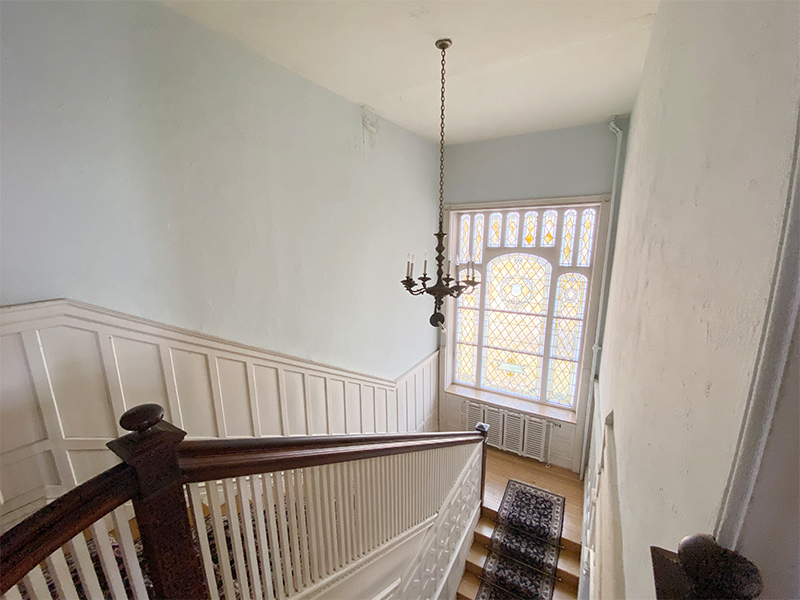What is the Difference Between Heritage Conservation
and Historic Preservation?
Understanding the distinction between heritage conservation and historic preservation is important for those involved in the fields of architecture, history, and cultural studies. While these terms are often used interchangeably, they encompass different philosophies and practices.
Heritage Conservation
Heritage conservation is a broad term that refers to the overall management of heritage resources, which can include buildings, landscapes, artifacts, and even intangible cultural heritage like traditions and languages. The goal of heritage conservation is to maintain and manage these resources in a way that respects their historical, cultural, and social significance. This approach often involves a combination of preservation, restoration, and adaptive reuse.
Key Aspects of Heritage Conservation
• Sustainability: This aspect focuses on the long-term management and sustainability of heritage resources by integrating eco-friendly practices and sustainable development principles into historic preservation. It involves using materials and techniques that minimize environmental impact, ensuring that heritage sites can be enjoyed by future generations. Sustainability in heritage conservation also includes energy efficiency, waste reduction, and the use of renewable resources in the maintenance and restoration of historic sites.
• Community Involvement: This key aspect emphasizes the active engagement of local communities in the conservation process. By involving community members, heritage conservation efforts can ensure that cultural heritage remains relevant and meaningful to those who live around it. This involvement fosters a sense of ownership and cultural identity, encouraging communities to take pride in their heritage and participate in its preservation. Community involvement can include educational programs, volunteer opportunities, and public consultations to gather input and support.
• Adaptive Reuse: This approach encourages the adaptation of heritage buildings for new uses while retaining their historical significance. By finding new purposes for old structures, adaptive reuse promotes heritage tourism and economic revitalization, breathing new life into historic areas. This can involve converting old defunct factories into cultural spaces, transforming historic homes into boutique hotels, or repurposing churches into community centers. Adaptive reuse not only preserves the architectural integrity of heritage sites but also makes them functional and relevant in contemporary society.
Heritage Conservation Examples
• Hawaiian Language Revitalization: In Hawaii, efforts to revitalize the Hawaiian language are a key aspect of preserving the state's intangible cultural heritage. Programs like the Pūnana Leo Hawaiian language immersion schools and the ʻAha Pūnana Leo organization focus on teaching the language to new generations, ensuring its survival and continued use in daily life.
• Appalachian Folk Traditions: In the Appalachian region, projects like the Appalachian Studies Association and the John C. Campbell Folk School focus on preserving traditional crafts, music, and storytelling. These initiatives help maintain the unique cultural identity of the region and pass down skills and knowledge to future generations.
Historic Preservation
Key Aspects of Historic Preservation
• Authenticity: This aspect of historic preservation emphasizes the importance of maintaining the original materials, design, and craftsmanship of historic structures. It involves a commitment to preserving the architectural character and integrity of a site, ensuring that any interventions or repairs are aligned with the original construction techniques and materials.
• Restoration: Restoration focuses on returning a building or site to a specific period in its history, often using historical documentation and materials to guide the process. This involves careful research and planning to accurately recreate the appearance and condition of the site as it existed during the chosen time period. Restoration may include the removal of later additions or alterations that are not in keeping with the historical character of the site. The goal is to enhance the educational and interpretive value of the site, allowing visitors to experience it as it was during a significant moment in its history.

Historic Preservation Examples
• The Tenement Museum, New York City: This museum is dedicated to preserving the history of immigrant life in the Lower East Side of Manhattan. The preservation project involved restoring two historic tenement buildings to reflect different time periods, providing visitors with an immersive experience of the living conditions and stories of the families who once resided there.
• The Farnsworth House, Plano, Illinois: Designed by architect Ludwig Mies van der Rohe, the Farnsworth House is a masterpiece of modernist architecture. Preservation efforts focus on maintaining the house's structural integrity and original design elements. The project also includes managing the surrounding landscape to reflect the architect's vision and providing educational tours to highlight its architectural significance.
• The French Quarter, New Orleans, Louisiana: Known for its vibrant culture and historic architecture, the French Quarter is a National Historic Landmark. Preservation efforts have focused on maintaining the unique Creole townhouses, ironwork balconies, and cobblestone streets, while also addressing challenges such as flooding and modern development pressures.
Key Differences
Scope: Heritage conservation is broader and includes a variety of tangible and intangible cultural resources, while historic preservation is more focused on architecture and physical sites.
Approach: Restoration focuses on returning a site to a specific historical period using original materials and techniques, while rehabilitation adapts historic buildings for modern use, updating systems like plumbing and electrical. Adaptive reuse repurposes old buildings for new functions, such as converting factories into lofts, and conservation aims to stabilize and maintain sites with minimal intervention.
Goals: The goal of heritage conservation is long-term sustainability and relevance, while historic preservation aims to protect and maintain historical integrity.
Understanding these differences helps professionals and communities make informed decisions about how to manage and protect their cultural and historical resources. Both approaches are essential for preserving our shared heritage for future generations.
See how House Museum artists are working to both preserve and conserve our cultural heritage.
| ב |
House Museum is a 501(c)(3) nonprofit organization based in Los Angeles, CA, USA.
Interested in contributing a vacant site or partnering with House? Please contact info [at] house.museum |
|
"In my Father's house there are many dwelling places." John 14:2 |



